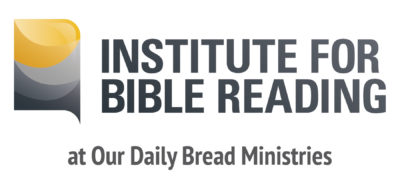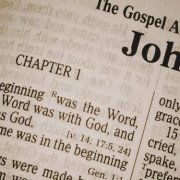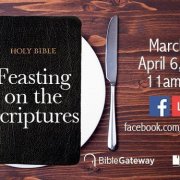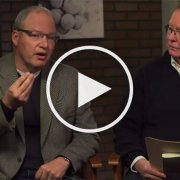How to Preach Without Chapters and Verses
We’ve been making the case over the last few months for rediscovering the power of Bible reading. In many ways, simple and straightforward reading has been the forgotten practice in the modern era of the Bible. We contend that reading whole books remains the first and most natural thing to do with the Bible.
But what about all the other things we do with the Bible? In our last article we explored a new way to think about Bible study. This week we’ll look at the implications our “read first” approach has for how we preach the Bible. Next time, our final contribution in this series will delve into how we can teach the Bible in this new paradigm.
Reimagining Bible Preaching
The Bible is a collection of literary creations. And overall, the Bible is a narrative. But we can’t assume those who hear our preaching will have acknowledged either of these two fundamentals when they think about the Bible. The default position of modernity’s view of the Bible portrayed it as a collection of spiritual facts. Our Bible practices within the church have focused on finding and using these Bible propositions in various ways.
Preaching in the modern era has tended to reinforce this view. The common goal has been to find the timeless doctrines or principles within the text and then urge people to adopt them. Often this has been further reduced to simply using the Bible as a prop for some practical life tip that is seen as the real attraction for contemporary audiences.
So if we go back to our two biblical basics (literary creations coming together to tell a story), what would change in our preaching?
What kind of writing is this sermon passage a part of? How does it work within the bigger message?
The sermon passage is part of this collection of literary units, so its place in the larger message of the book must be assessed. Of course, a crucial part of this involves recognizing and working with the way a particular literary genre communicates meaning. Poetry, parables, letters, stories, and wisdom all operate differently as ways to communicate. What kind of writing is this sermon passage a part of? How does it work within the bigger message?
After this preliminary work is done, then the preacher can begin to work on the actual job of a sermon: connecting the audience and their story to the bigger story in the Bible. This is the point of biblical preaching, and a vital element that too many people have been missing. Even if they’ve grown up in the church, their whole life they’ve been presented Bible content in disconnected pieces. But preachers now have a chance to connect the dots for people, often for the first time.
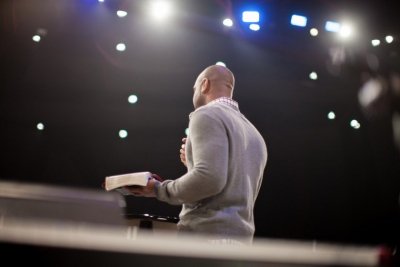
The preacher’s job is to be a present-day storyteller.
Storytelling in this model is exactly what we see in the Bible itself. Again and again Israel’s prophets and teachers refer back to earlier decisive moments in their story with God, and then help their present listeners see the meaning of their own time within this ongoing story. People are called to faithfully live out the narrative in a new scene in the drama of God and the world.
We see this especially in the life, teaching, and symbols of Jesus himself. He repeatedly calls up the earlier times and places of Israel’s journey—Exodus, wilderness, temptation, Jordan River, Temple, kings, and prophets—and then he follows those templates while shaping a new invitation and a new warning to the people of his own time.
This is precisely what preachers can do today. They can enlighten their congregations on the actual shape and texture of the biblical tale, and then they can bring the story into today’s world. The point is not to fit a little bit of the Bible into lives already framed by some other story (nationalism, consumerism, self-absorption, etc.), but to help people immerse the whole of their lives into the greater, comprehensive narrative of the Scriptures.
The story of God is the thing.
The key questions to ask of a sermon passage are then:
- Where is this passage in the continuing narrative?
- What major act of the drama is it in?
- What is its contribution to the narrative in its own time?
- And finally, how does this passage speak to us today in our own fresh moment, full of both opportunity and peril?
In such a scenario, it is not necessary to force congregations to jump around from reference to reference in the Bible while listening to a sermon. Hearing the chapter and verse numbers of multiple references won’t help them receive the Word of God in depth. Rather, the focus can rightly be on holistic Bible engagement and understanding. It will aid listeners more if preachers would refer to Bible passages simply by context and content. This is how people will learn how the parts of the Bible really fit together.
It will aid listeners more if preachers would refer to Bible passages simply by context and contentClick To TweetLike the storytellers of old, preachers can once again trust the way that God chose to deliver his revelation. We can plunge people back into the ancient story, and then send them back out into their world as well-taught agents to share in God’s work of renewal and healing.
And that’ll preach.
*Adapted from After Chapters & Verses: Engaging the Bible in the Coming Generations by Christopher R. Smith, InterVarsity Press, 2012. Rev. Dr. Smith is a Fellow at the Institute for Bible Reading. Our thanks to him for his genesis of these proposals for rethinking our use of the Bible today.
